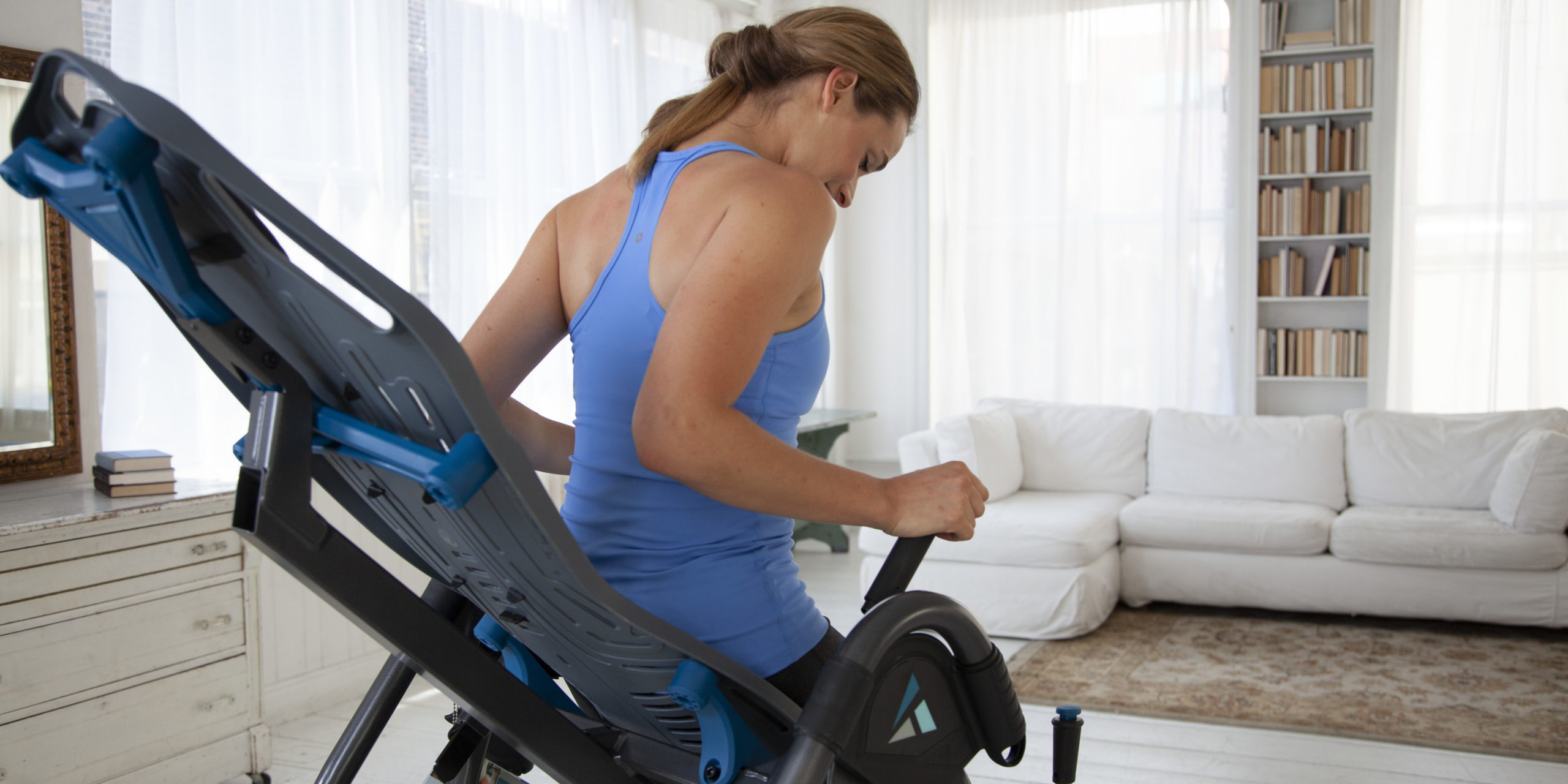Have you ever wondered why Teeter is the only brand on the market that doesn’t offer padded inversion tables?
What’s not to like about foam padding? If your back is in pain, you’re probably thinking that soft and squishy foam is exactly what you need to feel relief. However, if you’re looking for an inversion table designed to help relieve back pain, you’ll want to consider a few factors before deciding to go with the foam.
Why Teeter Doesn’t Use Foam On Our Inversion Tables
1. Padded Inversion Tables Stop Decompression
The secret behind inversion therapy is spinal decompression – widening the space between the vertebrae to take the load off of the spongy, moisture-filled discs between them. When the pressure is off, the discs are allowed to rehydrate and restore to their natural, healthy state. This helps to reduce pressure on the nerves that exit the spine, stretches and relieves painful muscle tension, and improves spinal alignment.
When you invert, your torso needs the freedom to ‘slide’ on the bed. On a Teeter, thanks to the smooth, firm surface, your body will elongate several inches when fully relaxed. This elongation is key.
On a padded inversion table, your body sinks into the thick foam table bed. In effect, the bed holds your body in that position, adding friction that prevents the body from sliding. Your spine is unable to stretch and elongate during inversion, which stops decompression and prevents you from getting the maximum pain-relieving benefits.
2. Heavy Foam Causes Imbalanced Inversion
For many people, the act of inverting can be a little intimidating. An inversion table that allows you to perfectly balance the table for your body type – thus having complete control over your rotation into and out of inversion – will ease anxiety and allow you to experience full relaxation and relief. That is what we mean when we label Teeter Inversion Tables as “precision balanced.”
Inversion tables with thick foam beds are typically manufactured with wood backings, making the bed very top-heavy. This causes an uneven distribution of weight, causing the user to rotate into inversion much too quickly and, even more concerning, making it very difficult to return upright. This makes for a very uneasy experience and causes the user to tense up or “climb out” of inversion using the handles, which counteracts any positive benefit to the decompression and muscle relaxation.
3. Foam Doesn’t Last
Another big reason why we don’t use foam is that it isn’t built to last. Foam and upholstery can tear, become imbalanced and uncomfortable, and ultimately, reduce the lifespan of the product. At Teeter, we want to design a high-quality product that will last you for years to come.
“I bought the LX9 two months ago to replace the Teeter I have been using for 20+ years. The old one was still solid after all of those years of frequent use, and I gave it to a friend who continues to make good use of it. Teeter equipment lasts forever.”
Hear from CEO Rylie Teeter on why padded inversion tables just don’t work:
What Does Teeter Offer Instead of Foam?
Over the last four decades, we at Teeter have learned a lot about inversion and the features needed to deliver the best results. Years of product testing and engineering have led us to find a table design far better than foam – a smooth, pliable surface that allows your spine to fully decompress, rejuvenate the discs, and relieve the pain.
1. The FitSpine FlexTech Bed is the Key to Decompression
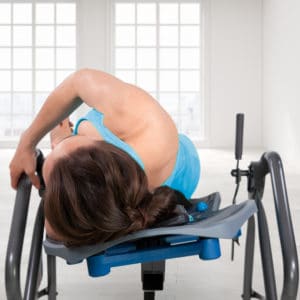
Teeter’s newest FitSpine Series is designed to optimize your spinal stretch for better decompression. The table’s surface is firm and flexible – the firmness allows your body to slide easily while inverted, letting the spine lengthen and reverse compression.
The table bed is lifted off the steel frame with the 8-Point Floating Suspension System, for a flexible surface that gives you more movement and better relaxation during inversion.
2. Facilitates Bonus Accessories for Boosted Relief
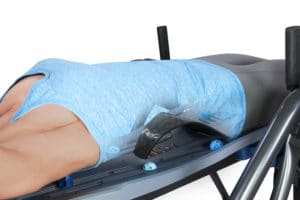
The FitSpine table is the only inversion table that features tracks in the bed so you can easily attach pain-relieving accessories. The acupressure nodes and lumbar bridge offer targeted trigger point relief and enhanced spinal alignment. Teeter also offers a host of add-on accessories to choose from for your specific needs. From the therapeutic vibration cushion to our NEW Posture Restore, the FitSpine allows you to customize your inversion experience and increase your benefits.
3. Teeter Precision Balancing Makes for Smooth and Effortless Inversion
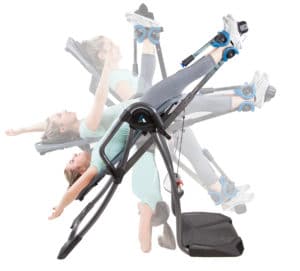
Teeter uses 3-hole hinge technology at the table’s pivot point so you can balance the table to your specific needs. We’ve also designed the FitSpine bed to remain light, so there is even distribution between the top of the table and the ankle locking system. This combo of engineered technology and smart design is what creates Teeter precision balancing. It allows you to move smoothly in and out of inversion with just the controlled movement of your arms!
4. Quality Materials are Built to Last
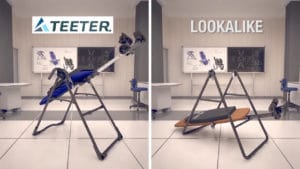
Teeter uses high-gauge steel to build the frame of each inversion table, ensuring strength and durability. Since 1981, this dedication to quality is what has set us apart from other options on the market. Teeter Inversion Tables are static load tested to hold 4x their weight capacity (that’s 1200 lbs!), and outperforms in quality testing, ease of use and assembly, and rotation control. Teeter inversion tables are built to last, which is why we can offer a full 5-Year warranty on all our inversion tables.
There are many amazing benefits of inversion that help improve health and quality of life for everyone, but no inversion table is the same. When shopping for an inversion table, it’s important to consider security, quality, and design to ensure you’re choosing a table that’s built for the benefits.
Get Real Back Pain Relief
Join over 3 million people who have found real back pain relief with Teeter.
